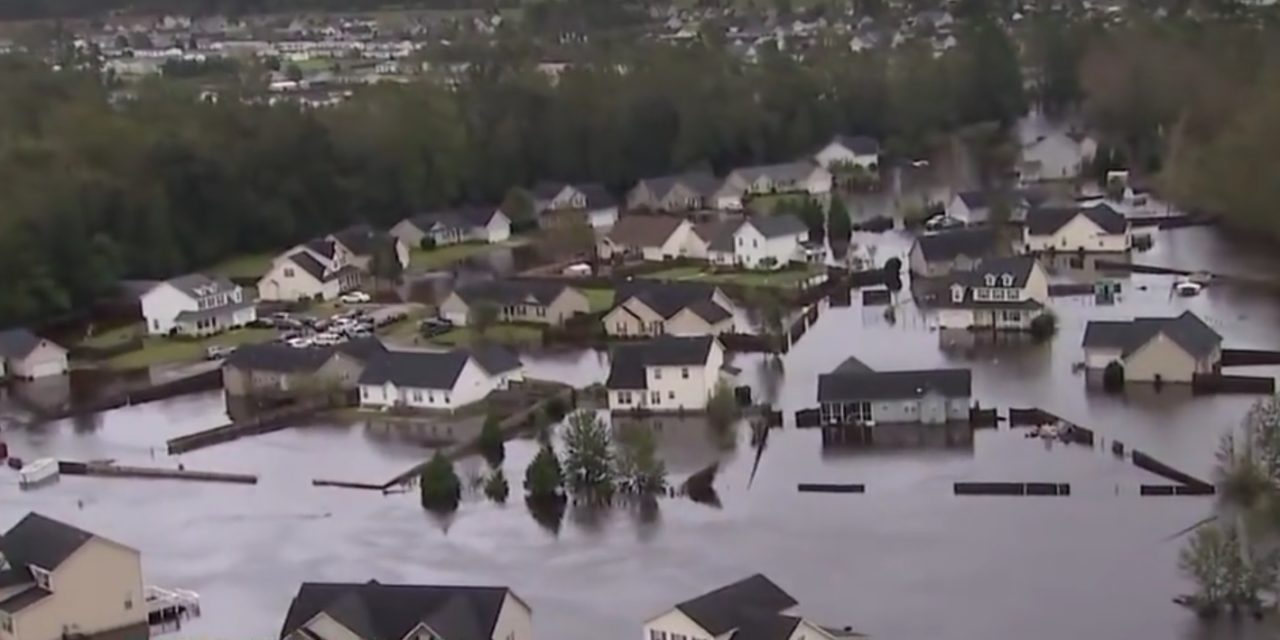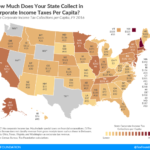As FEMA continues its rescue and restoration efforts in North Carolina due to Hurricane Florence, and low-lying areas brace for more flooding, some damaged oceanfront homes in the Tar Heel State prepared to receive substantial federal assistance have already benefited from federal help a half-dozen times in recent years.
Under the widely criticized National Flood Insurance Program (NFIP), which is heavily in debt, N.C. homeowners living in high-risk areas will be awarded with federal payouts to rebuild even if they’ve already relied on Washington for similar hurricane-related repair projects in the past.
According to ProPublica, an online, nonprofit journalism organization, the North Carolina areas facing the worst impact from Hurricane Florence are among the most vulnerable in the country when it comes to sea-level rise and beach erosion. Parts of North Topsail Beach, where 94 properties have received assistance multiple times, are declining at 5 feet per year.
With Florence marking the second hurricane to hit the NC coast in less than two years, ProPublica offers this assessment:
High-risk areas include communities along the Pamlico River and North Topsail Beach, which is on a barrier island near Wilmington. Homes there have gotten multiple flood payouts from FEMA’s National Flood Insurance Program going back as far as 1978. One property in North Topsail Beach has received nine separate payments, totaling $77,000, though the building is worth just $37,125. Another in nearby Topsail Beach has received 10 payments worth $467,000. That building is worth $300,000.
FEMA places buildings like these, including 1,132 across North Carolina, on a special list called “severe repetitive loss” structures because they’ve been flooded and rebuilt again and again with FEMA flood insurance. Properties that qualify for the list have made at least four claims of more than $5,000 each since 1978, or two claims with a combined value that’s worth more than the building itself. There are more than 35,000 such properties nationwide.
Collectively, the buildings in North Carolina are worth at least $280 million, and they’ve received $164 million in payments, according to FEMA data provided by the Natural Resources Defense Council, an environmental advocacy group. The list undoubtedly will grow after Hurricane Florence, placing additional strain on a debt-ridden program that experts say is in desperate need of reform.
Critics have long argued that the program subsidizes risky developments but reform efforts fail because raising premiums would make federal flood insurance – typically the only option available — unaffordable for lower-income residents. NFIP insurance is administered by FEMA and required for federally backed mortgages of homes in flood-prone areas. But enforcement of the requirement is lax. And the program is more than $20 billion in debt after Hurricane Sandy and Hurricane Katrina.
At the same time, when Sandy unexpectedly pummeled New York and New Jersey in 2012, many homeowners found that their federal insurance coverage was lacking and their out-of-pocket expenses for home repairs were astronomical. NFIP premiums are adjusted based on relative risk. Yet, in some cases, insurance claims in N.Y. and N.J. were summarily rejected.
When Hurricane Harvey dumped 30-plus inches of rain on the Houston area last year, causing massive flooding, that storm was labeled an astounding, nearly unprecedented national calamity. Less than a year later, the National Weather Service reports that preliminary data on Hurricane Florence indicate that the final rainfall stats in the Wilmington, N.C., area could amount to between 30 and 50 inches of precipitation.
Obviously, billions more in federal payments are headed toward that state. To be clear, insurance costs correlate closely with cleanup costs and Florence is not likely to approach the price tag for the two most devastating hurricanes of recent years. The federal government spent more than $100 billion on the response to, and recovery from, Katrina, and over $48 billion for Sandy.
After Hurricane Harvey, the New York Times reported that FEMA records showed a home on the Gulf Coast, in Spring, Tex., has been repaired 19 times due to storm damage, for a total of $912,000 — even though it is worth only $42,000.
Still, despite numerous major floods over the past decade, Americans’ desire for waterfront homes seems unquenchable. Some homeowners who receive repeated assistance from the feds after storm-inflicted damage enjoy upscale properties that feature luxury living. But the nationwide data shows that a majority of those awarded NFIP payouts are middle- and low-income residents living along rivers or in low-lying areas.
How did we get here? The private insurance industry essentially bailed out of the flood insurance market after catastrophic storms hit areas along the Mississippi River in 1927. It wasn’t until 1968 that Congress stepped up to create the NFIP.
In Washington, the initial hope was that the cost of the insurance program would provide incentives leading to better land-use practices and stormwater management at the local level. Instead, shorelines and river banks degrade, and rapid coastal construction continues unabated.
In North Carolina, as recently as 2012, state officials grappling with repetitive storm damage rejected new regulations on builders that were based, in part, on climate science projections. That would have particularly slowed development on the Outer Banks and the barrier islands. Instead, state lawmakers decided to rely upon historical data and decades-old maps, widely considered outdated, of flood-susceptible areas.
As City Lab has reported, repetitive-loss properties are a real problem for the NFIP: Less than 1 percent of homes insured under the program have been responsible for nearly 10 percent of paid claims. Homes are rebuilt or repaired multiple times without requiring sufficient modifications to mitigate future damage.
Even members of Congress who represent coastal areas agree that the program needs reform, and stark changes might be coming soon. Twice on Capitol Hill over the past year lawmakers have reluctantly kept the NFIP program running with stop-gap budgeting measures.
The prospect of the NFIP on the chopping block is a real possibility, though a grandfather clause of some type is likely for homeowners who played by the previous rules. Some members of Congress have come to view the program as little more than an inefficient version of government welfare. President Trump’s current budget slashed funding for updated FEMA maps of flood-prone areas even as most experts say the cartography is in desperate need of an upgrade.
Beyond the Washington Beltway, former FEMA Administrator Craig Fugate has argued that future development in 100-year floodplains, which would include much of the East Coast, should be ineligible for NFIP coverage.
N.C. Gov. Roy Cooper, who partially retracted the state’s 2012 decision to ignore climate change and long-term projections of rising sea levels, said the government should fund more property buyouts to permanently remove homes from risky areas.
The humanitarian approach is this: Nearly 1.8 million losses have been paid out since the NFIP’s inception in 1968. Without it, how would those survivors have individually coped with a natural disaster?
Yet, a somewhat bipartisan opposition to the current version of the flood insurance program seems to be emerging.
Fiscal conservatives say the program was supposed to take the burden off taxpayers but it has not. Environmentalists argue that it has become an enabler of construction on flood-prone coastlines by charging premiums too low to reflect the true cost of building there.







